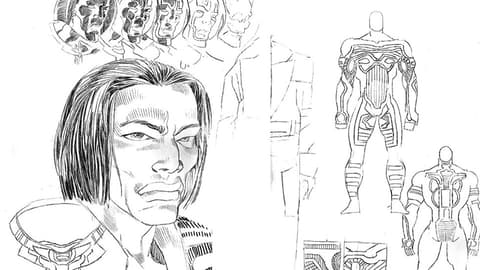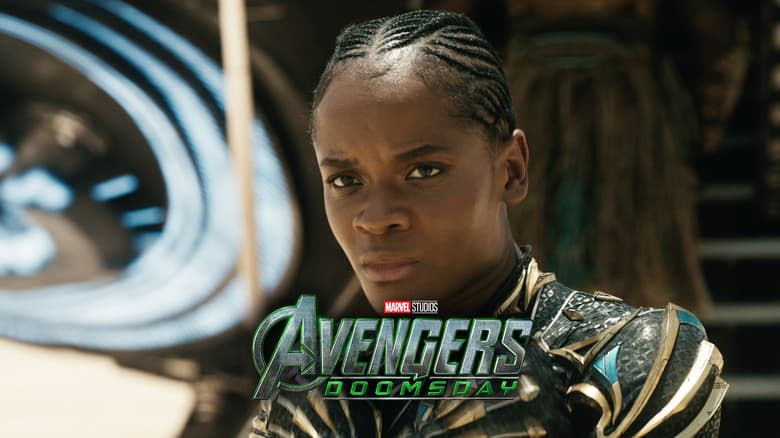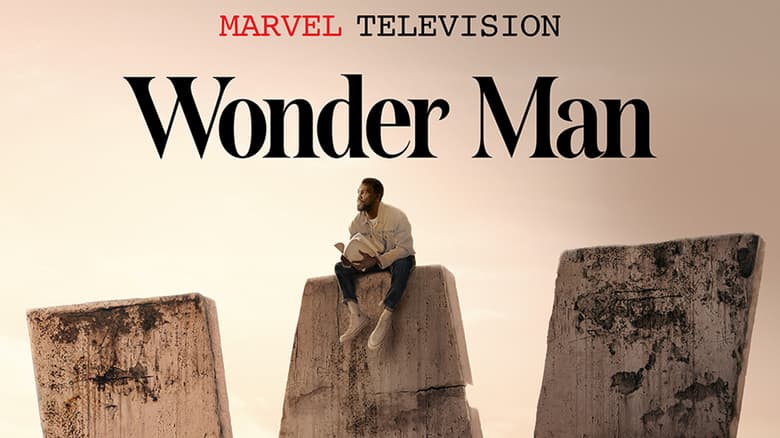Marvel Remembers Edmund Bagwell
Discover the rich history behind a key figure in British comics!

Though known by various names throughout his creative career, including Edmund Perryman, Edmund Kitsune, E.C. Perriman, and Edmund Bagwell, the late British artist perhaps known best as simply Bagwell stood as an important figure in the U.K. comics scene and Marvel recognizes and celebrates his stature and passion for his craft on the event of his recent passing.
Many details of Bagwell’s early life remain obscure, save for his love of comics and in particular the work of the legendary Jack Kirby. Some of his earliest work in the 1970s centered on the famous British comic series 2000 AD, a book he contributed to for much of his career. Writer Rob Williams’ first encounter with the man came through their connection with the series.
“I was writing the third series of ‘The Ten-Seconders’ for 2000 AD [in 2012] and was heading into some big cosmic Kirby territory and I knew Edmund was a huge Kirby fan,” he remembers. “[He] showed his capacity for epic widescreen gods and monsters [on a previous story]. The work he turned in on ‘Ten-Seconders’ was just wonderful. He handled the down-to-earth human moments so well as a contrast to giant warring space aliens, etc, and his storytelling was terrific; it’s amazing to me he wasn’t a bigger star in the industry.”
By the 1990s, Bagwell’s projects included art for the Marvel UK line of books. Soon after a stint with the infamous Motormouth character in 1992, he joined with writer Simon Jowett on BLACK AXE, the story of a uniquely immortal warrior that crossed over with Marvel hero The Black Panther.
“When I started writing BLACK AXE, I was still pretty green as a comics writer,” says Jowett. “I’m not sure how much work Ed had done as part of a team, working from someone else’s full script, and I suspect this arrangement chafed a little, but he was far too sweet a guy to say anything and far too professional to let it affect his work. We kind of felt our way into a working relationship and his pages were really strong, right from our first issue.
“Personally, I think we hit our stride as a team with our second story arc, set in an African state bordering Wakanda, torn apart by civil war and preyed upon by unscrupulous arms dealers. Black Panther featured prominently, but Ed had designed a new character, Afrikaa, who quickly became a favorite of mine to write and one I’d have loved to return to—with Ed providing the art, of course.
“Ed’s biggest strength was, I believe, that he couldn’t draw like anyone but himself. ‘Unique’ is a horribly overused term, but no one laid out a page or framed a panel like Ed. His design sense, from characters up, was distinctly his own. He never hid his influences—Kirby especially—and his love for them shone through.”
The artist also threw in his lot with the Marvel UK imprint known as Marvel Frontier. Michael Wiessmuller, Frontier editor and originator, calls Bagwell a “crazy genius,” a term he uses lovingly.
“I first came across Ed in London in the early 1990s, introduced by a mutual friend, Nick Abadzis,” he notes. “Nick had written a strip for Ed, which found its way into Crisis magazine, the mature readers pendant to 2000AD, where I was the editor. Ed’s winning personality coupled with his crazy, genius Kirbyesque art and his capacity for Lager made him an instant regular at the London comics’ creative community hangouts, aka the pub. In time, we became fast friends, sharing a house together and as I became editor at Marvel UK, I introduced him to the bullpen there, where to the surprise of absolutely no one, he quickly moved in and became friends with everyone there; Liam Sharp, Andy Lanning, Bryan Hitch, to name but a few.
“Before long he was co-creator and penciler on the monthly comic BLACK AXE and a regular go-to guy for designing crazy characters. One of these characters was for DANCES WITH DEMONS, recently collected in MARVEL FRONTIER COMICS, and illustrated by Charlie Adlard.
“His art was not fan-favorite in the heyday of Jim Lee’s X-Men, but instead he was an artist’s artist. Everyone I spoke to or showed his art to afterwards had this strange, happy look in their eyes. I never quite understood what that look was, until now. Looking back over Ed’s art, the books he created and remembering those days of sheer youthful enthusiasm and unbridled creativity, I realize that it simply was love.”
Perhaps friend Nick Abadzis provides the clearest picture and perception of his companion after years of both working and laughing with him. Bagwell’s artistry remains virtually unknown in America, but he touched the lives of many regardless, and on a deep level.
“Edmund was a phenomenal artist whose creativity was inspired by, but not bound to, the comics page or the comics industry per se,” says Abadzis. “I think he’d be slightly bemused by all the attention he’s getting, now that it’s too late. As an industry, and as a society, we need to look after all our artists in this game, not just the A-list stars, but the more obscure ones too, who exist more at the margins, who push the envelope and who extend the language of comics with their imaginative experiments somewhere out of the spotlight.
“Ed was one of these guys. He was very private, not a self-promoter in any way, because that just wasn’t in his nature. Apart from his dedication to his wife Hae Sook and her family, his whole being was devoted to making comics and art, and he did so no matter what, no matter where he found himself in the world. Working with him could be crazy, but it was always fun and the results were always unexpected and often mind-blowing. He observed the world through a most unusual lens, and translated it into lines on paper for us to see. On a personal level, he was a gentle, extremely kind and generous man with a sharp, very wry sense of humor, whose manner belied his passion and dedication to the language of comics.
“I will miss him very much.”
The Daily Bugle
Can’t-miss news and updates from across the Marvel Universe!




